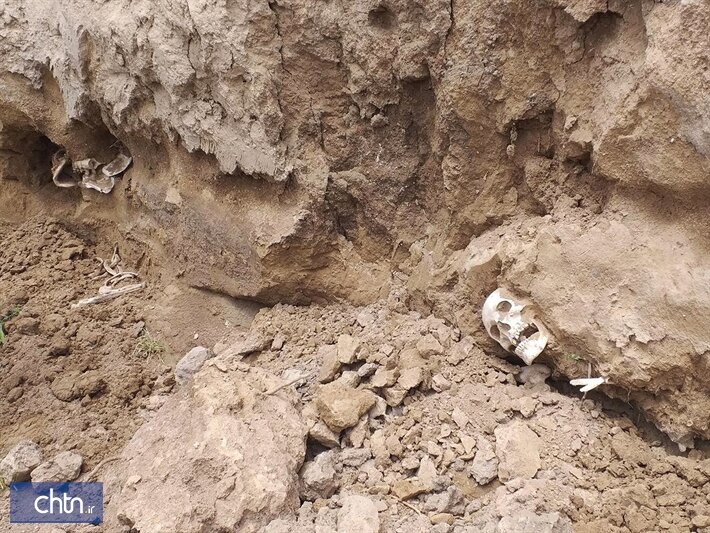Flash floods unearth human skeletons dating to later Islamic times

TEHRAN – Two human skeletons, which have newly been discovered in Iran’s northern Golestan Province, are estimated to date from the later Islamic times, CHTN reported on Friday.
The burial method indicates that these two skeletons belong to the late Islamic period, which is consistent with previous archeological studies in this cemetery, and according to the burial culture of the Islamic period, there were no objects in the graves, the report added.
The human remains were brought to light after rounds of rainstorms partly washed the soil away from margins of an ancient commentary nearing the village of Qarah Tappeh, in Torkaman county, Golestan province.
“Over the last few days, the remains of two human skeletons have emerged, which according to archeological observations of this department is the result of several factors, including the widening of Gorgan-Turkmen road in the past years which leveled the edges of Agha-Imam Islamic cemetery; last year’s floods in the province that caused gigantic volumes of water entering this area; and recent rains that caused further erosion of the soil.”
In 2016, geophysical surveys and archaeological soundings for demarcating a protective core and buffer zone for the sites of Qara-Tappeh and Sagzabad resulted in the discovery of a vast graveyard to the east of Qara-Tappeh, west, and south of Tappeh Qabrestan estimated to date back to the late Iron II-early Iron III period.
AFM/MG
Leave a Comment